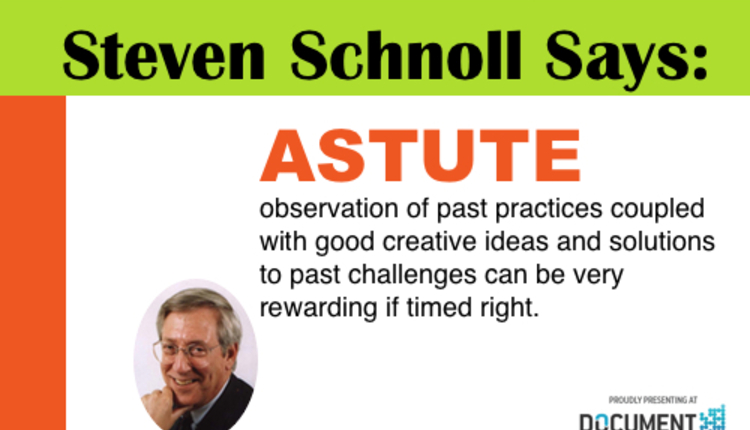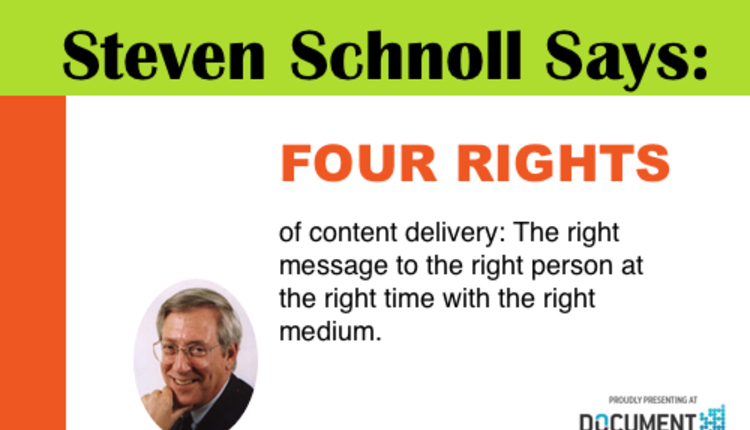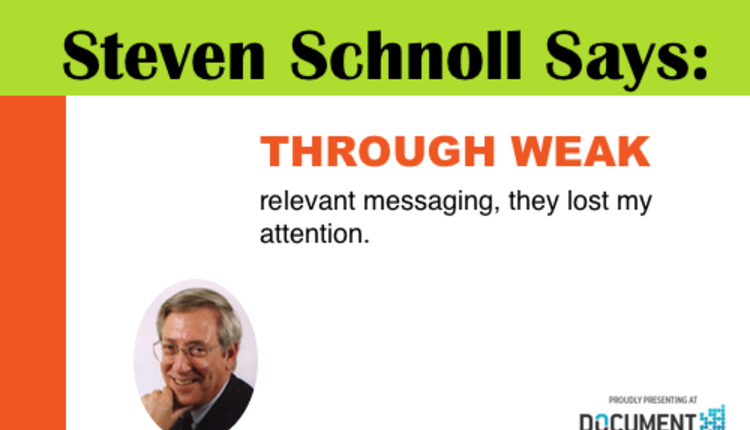
This is the last in my series on the Four Rights–the right medium. Delivering the relevant message to the correct person in a timely basis with the content medium they prefer is an awesome marketing portfolio.
If you are from my generation, the baby boomer, paper and ink is still king. However, as the tablet and smartphone become more ubiquitous in society, I am very open to receiving timely messages on my digital devices, particularly when I am researching a potential new purchase. The new term that we hear bantered around is the “omni channel.” My interpretation of this term is that there is no one dominate channel delivering our message but a cohesive cross-media mix. While I have a great love of printed books, the convenience of traveling with a tablet that may have multiple books and magazines on it is certainly preferred.
In the business world, we are all seeing companies producing transactional documents push their consumers to accept digital delivery of statements and then pay online. My recent Comcast invoice is a great example of a company attempting to cut expenses through false pretense. They have a campaign called “Paperlessismore.” They are pushing what they call the Ecobill. They are promoting that the online bill is more convenient and more green. They want you to view and pay your bill all online. Now, it is proven that printed statements are not saving trees since reforestation is one of the most proven ecological facts. Comcast is promoting it because with the cost of print, paper and postage rising, they can save money. Yet there is no incentive for me. However, on the consumer side, writing a check and then putting an ever-increasing stamp on the envelope, there is great savings to go paperless. So, through a bit of deceit and practicality, the content medium of choice is changing. Almost by default, we are achieving the omni channel. Now, we overlay the transpromo ability to send colorful, timely and relevant messaging to people via these online statements, and we have now changed the whole communication experience.
I guess to sum up this series of posts, I would say “times they are a changing,” to steal a phrase from the famous song by Bob Dylan. If a content provider can stay away from siloed content delivery and provide a comprehensive cross-media Four Rights campaign to their customer base, no matter what the content is, they may have a sustainable business model going forward.
I look forward to seeing you at my power session and establishing a further dialogue on “The Four Rights.”
Mr. Schnoll will be presenting on Tuesday, May 13, 2014 at the DOCUMENT Strategy Forum. Don't miss his Power Session P202/P203 “Building Your Converging Content Future Today: The Matrix of Processes, Technologies and Your Data Assets.” For more information on the DOCUMENT Strategy Forum, visit www.documentstrategyforum.com.


















